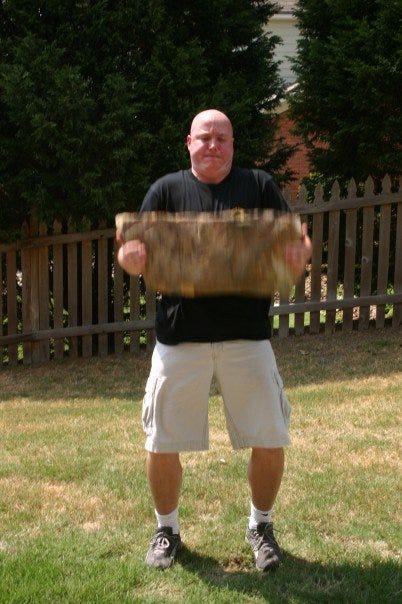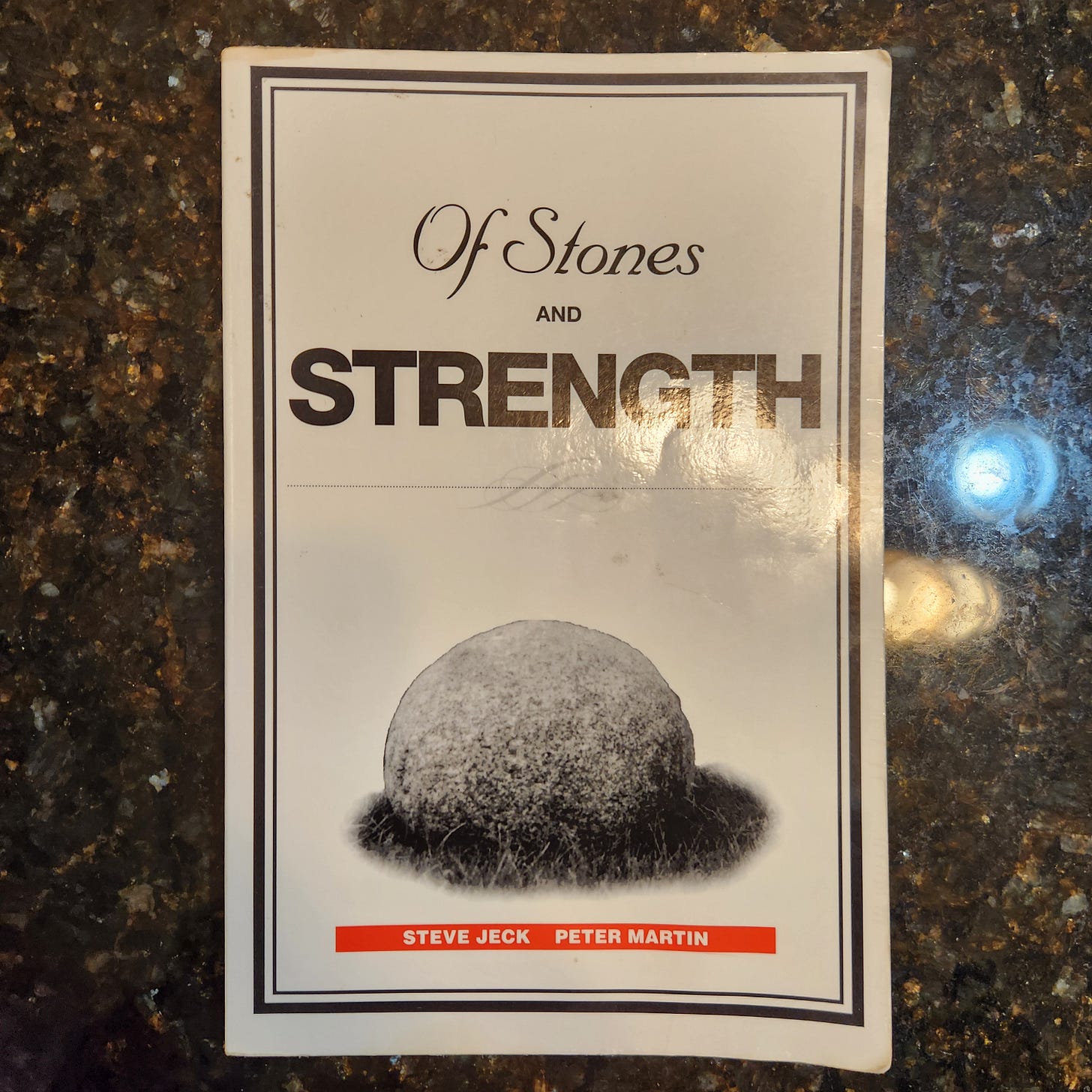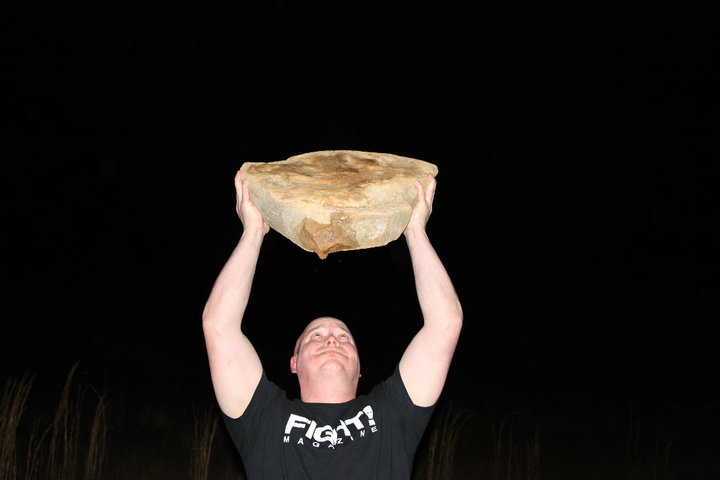“Ultimately, a man is challenged and bettered by facing any task that exceeds his current abilities. Some choose big stones. Others drive past or traverse such challenges…pity.” -Steve Jeck, The Choice

Stone lifting is, sadly, an activity most seekers of strength never experience. The exact origins of stone lifting aren’t entirely clear, but Milo of Croton—credited with creating the concept of progressive overload—was known for his daily practice of lifting and carrying a calf. As the calf grew larger, Milo grew stronger. He is also said to have favored stone lifting, with a 316-pound stone bearing an inscription that validates his association with this practice. For more reading on Milo and historic stone lifting check out this article at Physical Culture Study.
Scotland has a rich history of stone lifting. A common test of strength for young men in the Highlands was lifting the clan’s clach cuid fir, or “manhood stones,” from the ground to waist height. Successfully completing this feat marked the transition into manhood and earned the young clansman recognition within the community.
These tests of strength eventually found their way into organized competitions such as the Highland Games and Strongman events, where various stone-lifting and stone-throwing disciplines continue to be contested.
In addition to Scotland, many other countries—including Iceland, Greece, Germany, Ireland, and Finland—also have a longstanding tradition of stone lifting.

My interest in stone lifting began after meeting the late Steve Jeck. In 2007, I attended the Wake Forest Strength Coaches Clinic, where Steve delivered a powerful presentation on the lessons he had learned from stone lifting. His insights were underscored by incredible demonstrations of stone-lifting feats. After returning from that conference, I devoured everything Steve had ever published on the IronMind website and eagerly ordered his books and videos. If you’re fortunate enough to own any of these products, keep them under lock and key—they’re worth their weight in gold.
Stone lifting was humbling. I found it far more challenging to lift my 250-pound river stone from the ground than a 400-pound barbell. We preferred natural stones since, at the time, it was trendy to make your own using molds and concrete. Jeck, ever the purist, frowned on the idea of making stones. “Scott,” Steve said to me, “God has already made the stones for you. Go find them, and lift them.” Hard to argue with that.
Stone lifting presents challenges that barbells simply don’t. As Jeck wrote in an article for Milo Magazine, “The distinction I’d make is that barbells are heavy while stones are defiant.” Stones lack the knurled grip of a barbell. They are often awkwardly shaped with poor handholds, which will test your grip strength in ways barbells never could.
Next time you’re out hiking or walking by a river, do yourself a favor: take a look at the stones around you. If one catches your eye, try lifting it to your lap, chest, or shoulder. If you’re feeling especially bold, press it overhead. Forget sets, reps, and all the traditional workout protocols—just have fun. You’ll be glad you did!
I hope you enjoyed this week’s article, and until next time, stay strong and healthy!






Rogue Fitness has a great series on stone lifting:
- Scotland - https://www.youtube.com/watch?v=MhQlNwxn5oo
- Iceland - https://www.youtube.com/watch?v=79Tcsg2Yac8
- Basque - https://www.youtube.com/watch?v=vck32S27RmM
My own gym doesn't have the space for stonelifting. But we do sandbags, and that's... challenging.
I like this, Scott!
oftentimes we don't need fancy tools or machines
simply our bodies and what's around us
next time I'm near a river, I'll take on the challenge (and challenge my sons too)
thank you!